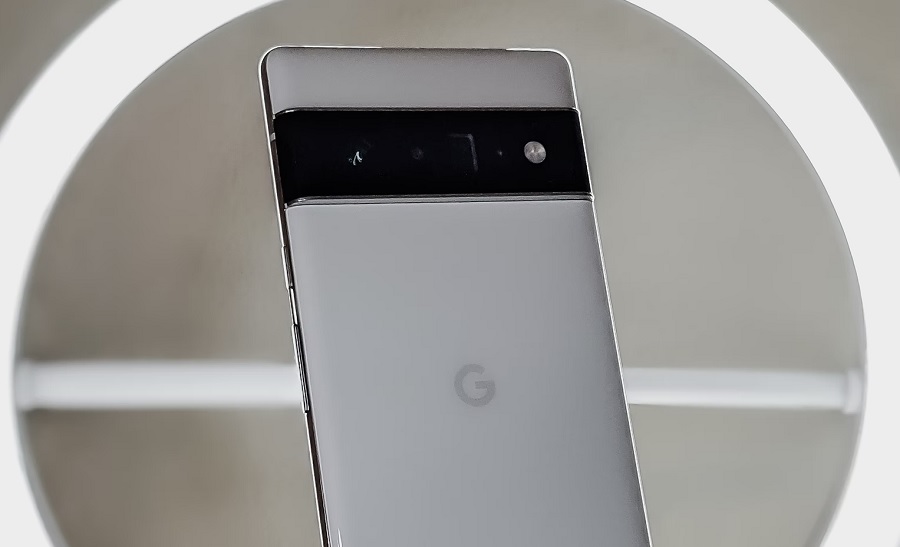The first information leaks for Google’s next mid-range Pixel phone recently surfaced, and more have been discovered since then. Tech fans hoping that the Pixel 6a would also get a significant camera upgrade next year may be disappointed with the newly unearthed details.
Since the Pixel 3 generation, Google has used a 12.2MP sensor as the main camera for its annual mobile phone releases both for the flagship line and the A-series. But the company made serious improvements this year after switching to Samsung’s 50MP ISOCELL GN1 sensor.
The GN1 is overall a bigger lens compared to the 12.2MP Sony IMX363, which means that it can take brighter and clearer photos. When rumors about the Pixel 6a started appearing in the wild, Google fans hoped that the company would apply the same strategy of using the same main cameras on its flagship and mid-range phones.
Unfortunately, that does not seem to be the case based on the findings of 9To5Google’s APK Insight. Upon inspection of the Google Camera app codes, they found that the Pixel 6a will also use the 12.2MP IMX363 sensor as its primary camera.
The Pixel 6a leaked renders showed it would have two rear-facing cameras. And the more recent report suggested the second sensor could be the 12MP Sony IMX386. The same report also found that the Pixel 6a is codenamed “Bluejay” and will also use an 8MP IMX355 camera for selfies. At least the front camera is the same as the standard Pixel 6.
On the bright side, APK Insight found potential evidence that Pixel 6a would be powered by the same Google Tensor chip (GS101) used on the flagship Pixel 6. This could enable the device to function with the latest native functionalities introduced in the Pixel 6 series, such as on-device translations.
Pixel 6a is expected to look very similar to the regular Pixel 6, including the camera bar to house the rear-facing sensors. The leaked renders also suggest the mid-range phone might feature an in-display fingerprint scanner. However, Google fans may have to wait until the second half of 2022 to confirm the phone’s reported design and specs.
Photo by Triyansh Gill on Unsplash



 WeRide Expands Robotaxi Services in Beijing After Securing Key Permit
WeRide Expands Robotaxi Services in Beijing After Securing Key Permit  AI Revolutionizes Oil and Gas Drilling, Boosting Efficiency and Cost Savings
AI Revolutionizes Oil and Gas Drilling, Boosting Efficiency and Cost Savings  Trump Buys Tesla to Back Musk Amid Controversy, TSLA Shares Rebound
Trump Buys Tesla to Back Musk Amid Controversy, TSLA Shares Rebound  DOJ Drops Push to Force Google to Sell AI Investments Amid Antitrust Battle
DOJ Drops Push to Force Google to Sell AI Investments Amid Antitrust Battle  OpenAI’s GPT-4.5: A Costly AI Upgrade with Mixed Reviews
OpenAI’s GPT-4.5: A Costly AI Upgrade with Mixed Reviews  Apple’s Encryption Clash with UK Sparks U.S. Investigation
Apple’s Encryption Clash with UK Sparks U.S. Investigation  U.S.-Poland Clash Over Ukraine’s Starlink Access Escalates
U.S.-Poland Clash Over Ukraine’s Starlink Access Escalates  Reliance Jio Partners with SpaceX’s Starlink for Satellite Internet in India
Reliance Jio Partners with SpaceX’s Starlink for Satellite Internet in India  Trump Backs Musk, Warns Tesla Vandals Will Face Severe Consequences
Trump Backs Musk, Warns Tesla Vandals Will Face Severe Consequences  Nissan CEO Faces Exit Amid Struggles, Successor Search Underway
Nissan CEO Faces Exit Amid Struggles, Successor Search Underway  Tesla Joins Wedbush’s ‘Best Ideas List’ Amid Major Innovation Surge
Tesla Joins Wedbush’s ‘Best Ideas List’ Amid Major Innovation Surge  Broadcom Soars on AI Demand, Raises Guidance Amid Nvidia Constraints
Broadcom Soars on AI Demand, Raises Guidance Amid Nvidia Constraints  ServiceNow Nears $3B Deal to Acquire AI Firm Moveworks
ServiceNow Nears $3B Deal to Acquire AI Firm Moveworks  NASA and SpaceX Set to Launch Crew-10 Mission to ISS on March 14
NASA and SpaceX Set to Launch Crew-10 Mission to ISS on March 14  Xpeng Eyes Major Investment in Humanoid Robots, Aims for Up to $13.8 Billion
Xpeng Eyes Major Investment in Humanoid Robots, Aims for Up to $13.8 Billion  Trump Backs Musk, Buys Tesla Amid Controversy Over DOGE Cuts
Trump Backs Musk, Buys Tesla Amid Controversy Over DOGE Cuts  SpaceX Delays NASA Crew-10 Launch Amid Technical Issue, Stranded Astronauts Await Return
SpaceX Delays NASA Crew-10 Launch Amid Technical Issue, Stranded Astronauts Await Return 































